Excerpts from Jim Conrad's
Naturalist Newsletter
entry dated August 15, 2022, issued from near Tequisquiapan, elevation about 1,900m (6200 ft), N20.565°, W99.890°, Querétaro state, MÉXICO
"ELEGANT TWINEVINE" FLOWERING
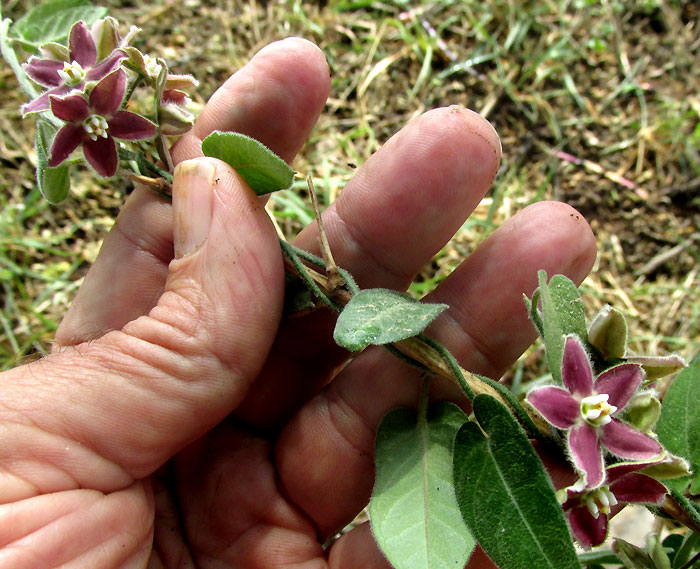
On the first morning after the first good rain of the rainy season -- which arrives two months late this year -- in a weedy spot beneath a mesquite tree along a gravel road, the above flowering vine offered an appropriate celebration for the rain. Even at this distance, with those five white "hoods" gathered around the blossoms' centers like Stonehengian megaliths, it can be nothing other than one of the milkweeds. Milkweed species once comprised the Milkweed Family, the Asclepiadaceae, but that family is lumped with the Dogbane Family, the Apocynaceae.
Several genera of "climbing milkweeds" are recognized, and to distinguish them, if you don't already know them, you have to "do the botany."

The blossoms' corollas are exceptionally pretty with their mulberry-violet corollas fringed with white, but mulberry-violet is a common hue among the milkweeds. More diagnostic are details of the blossoms' centers.
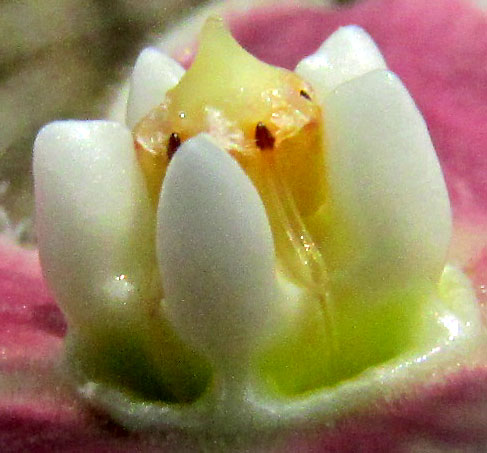
The pointed-topped, cream-colored feature in the above image is the defining structure of the milkweeds. It's the gynostegium, consisting of the flower's stigma, which is part of the female pistil, fused with the anthers, which are part of the male stamens. The dark, grainlike items along the gynostegium's perimeter are pollinarium glands, which reside at the top of a {hidden in the picture} pollinarium, which is an upside-down V-shaped item, each arm of the V bearing a single tear-shaped pollinium. Pollinia are waxy globs of pollen. Here's how it all hangs together:
When a pollinating insect visits and is wandering around the gynostegium looking for food, one of its legs slips between a pair of white hoods, which are structured so that the leg is guided into the vertical slit visible between the hoods, and gets a little caught there. When the leg is jerked upward, it snags on the dark pollinarium gland, which lifts the gland with its two pollinium-bearing arms, and the pollinarium remains stuck to the leg. When the insect visits another flower, if a pollen-bearing pollinium makes contact with the gynostegium, pollination will be accomplished.
In the above photo, exceptional features to note include the pointy peak of the gynostegium, and the relatively small size of the hoods.
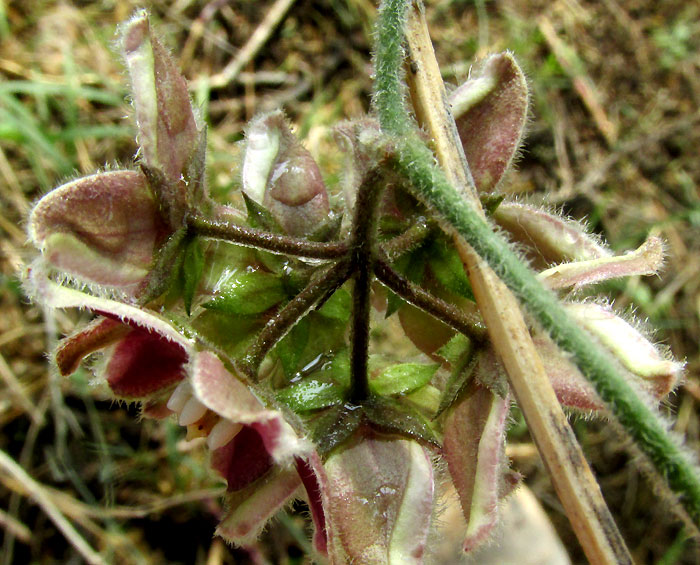
The flower cluster's underside, still wet from the night's rain, shows that even the cyme-type inflorescence arrangement is aesthetically pleasing to see. A cyme is a flower cluster with a central stem-like pedicel bearing a single terminal flower which develops first, then the other blossoms developing on lateral pedicels.
The combination of vininess and the blossoms producing such conspicuously inflated white hoods on a saucer-shaped corolla already cue us to the insight that here we're dealing with the genus Funastrum. Species of Funastrum often are referred to in English as twinevines. As currently understood, Mexico is home to ~14 species of twinevines. Often their flowers are rather similar, so their vegetative features are useful to notice.
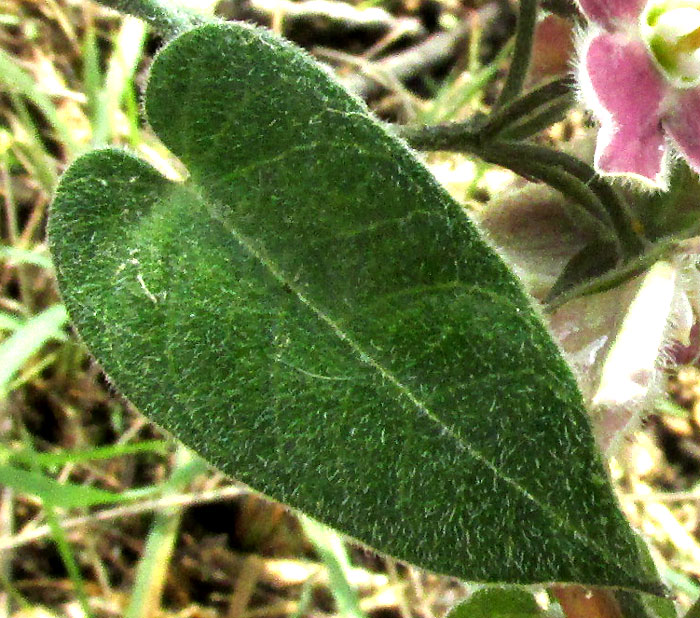
The heartshaped leaf is common among twinevines, but the narrowness of our vine's heartshaped combined with the leaves' deeply lobed bases is somewhat distinctive.
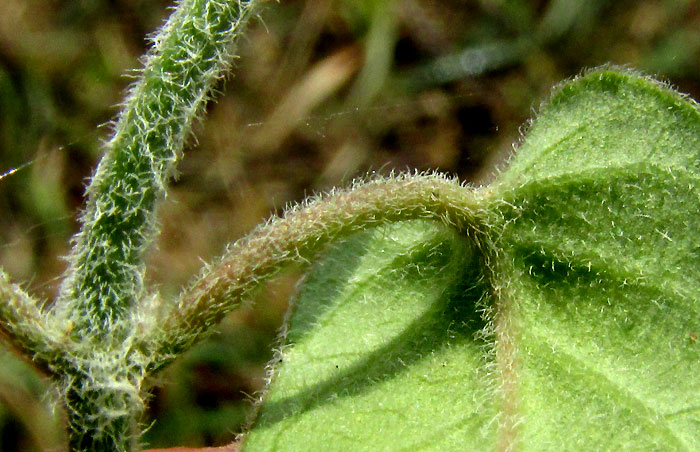
Also, our species' dense hairiness, with the hairs being somewhat soft, not straight and stiff, is a valuable field mark.
All the above details lead us to FUNASTRUM ELEGANS, a relatively commonly occurring twinevine endemic just to the highlands of central and western Mexico, from Jalisco and San Luis Potosí states south to Oaxaca and Veracruz. One reason for its success at surviving is that it favors disturbed sites, like ours. Also it produces an unusually large crop of fruits. You might be interested in comparing our Funastrum elegans with another twinevine we met in the Yucatan, Funastrum bilobum
The species bears no English name in common usage, and in Spanish its name varies from place to place. Since all Funastrum species can be called twinevines and the species name is elegans, I call it the Elegant Twinevine, though I find no one else doing so.
In Michoacán state, fruits of the species have been documented as eaten. In other places it's been used medicinally for stomach pain and menstrual colic.